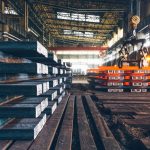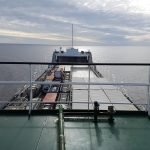South Korea’s share of global new ship orders is expected to fall below 20% this year, the lowest since the industry’s downturn 2016, but its shipbuilders are projected to maintain a competitive edge in high-value vessels like LNG carriers. Experts predict that Korean shipbuilders will counter China’s volume-driven strategy by heavily investing in smart and eco-friendly ship technologies.
ING Think, the economic research arm of Dutch financial firm ING, noted in its “Asia’s Shipbuilding Renaissance” report, published on Dec. 16, that while South Korea’s market share in the global shipbuilding industry has declined over the past four years, its shipbuilders have become more efficient and competitive. The report also highlighted that South Korean shipyards dominate the high-value LNG and LPG (liquefied petroleum gas) carrier markets, securing the majority of orders in these sectors.
From January to November this year, South Korean shipbuilders secured 10.92 million compensated gross tonnage (CGT) out of a total of 60.33 million CGT in global new ship orders, and 248 out of 2,159 vessels. This accounts for 18% of the market, the lowest share since 2016′s 15.5%. Projections suggest that South Korea’s annual share will likely remain below 20%.
China’s market share rose to 69% during the same period, driven by domestic orders. Following the 2008 global financial crisis, China restructured its shipbuilding industry and dominated low-cost orders for container ships and bulk carriers, maintaining the top spot in global new orders since 2012. In recent years, China has also increased its presence in the LNG carrier market, once dominated by South Korea.
China holds a significant competitive advantage in shipbuilding due to lower labor and raw material costs, as well as generous government financial support. Labor costs, which account for over 20% of production expenses, are half those in South Korea and Japan.
ING found that South Korea has the highest shipyard utilization rate among the three Asian countries, with 70.9 orders per shipyard, compared to 21.3 for China and 13.3 for Japan. ING noted that South Korean shipbuilders are filling their yards with “profitable and reliable orders.”
While much of South Korea’s shipbuilding output is export-oriented, most of China’s orders come from domestic clients. Ship exports make up a larger portion of South Korea’s total exports compared to China and Japan. ING emphasized that shipbuilding is driving South Korea’s export growth this year, and with a current backlog of 3.5 years, ship exports are expected to continue rising for at least next more years.
Despite China’s increasing LNG carrier orders to close the gap with South Korea, experts believe it will take time for China to match South Korea’s technological capabilities. In 2022, China secured LNG carrier orders that South Korean shipyards could not accommodate, with deliveries starting next year. Once these ships are operational, China’s technological progress will become clearer.
South Korea aims to maintain its technological lead by accelerating the development of next-generation ships, such as ammonia and carbon dioxide carriers, fully autonomous ships, and zero-emission engines.
Source: The Chosun Daily






